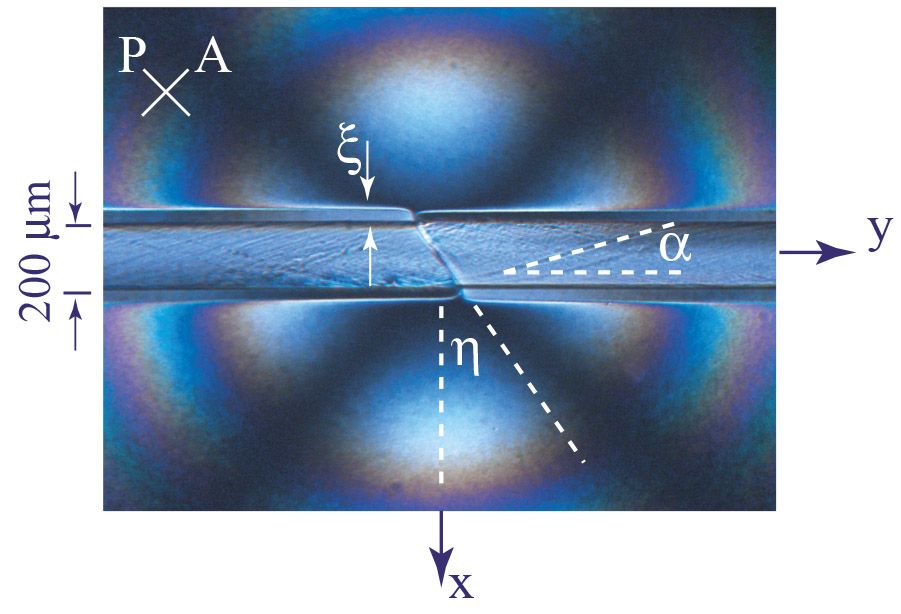EPJ E Highlight - Molecular scale transporter with a twist, powered by liquid crystal defects
- Details
- Published on 17 March 2017

Delivery of biochemical substances is now possible using a novel application of liquid crystal defects, forming a loop enclosing the substance travelling alongside twisted fibres
Defects that break the symmetry of otherwise orderly material are called topological defects. In solid crystals, they are called dislocations because they interrupt the regularly structured atom lattice. In contrast, topological defects called disclinations take the form of loops in liquid crystal of the nematic variety, whose elongated molecules look like a shoal of fish. New experiments supported by a theoretical model show how defects forming loops around twisted plastic fibres dipped in liquid crystal could be used for the transport of biochemical substances, when controlled by electric and magnetic fields. Published in EPJ E, these findings - achieved by Mallory Dazza from the Ecole normale supérieure Cachan, France, and colleagues - have potential applications in electro-optical micromechanical and microfluidic systems.
The fruit of a Portuguese, Slovene and French collaboration, this work focuses on defects referred to as ‘captive disclination loops.’ The authors set out to manipulate these loops stabilised by encircling twisted fibres, like a necklace, by applying a magnetic field that is oblique to the fibres. Dazza and her colleagues found that loops are sensitive to whether the fibres are twisted in a right-handed or left-handed manner. This handedness is a characteristic that is native in cellulose fibres or can be induced by a simple twist in plastic fibres.
The authors also found that the tilt of a loop is proportional to the angle of the twist of the fibre. This made them realise that the tilt increases when an electric or magnetic field is applied perpendicular to the fibre.
Moreover, the loops have the ability to move alongside a translational motion when a magnetic field is applied in a direction oblique to the fibre. This means that by applying such a field, it is possible to control the transport of molecules trapped inside the loops, moving alongside the fibres.
Action of fields on captive disclination loops. M. Dazza, R. Cabeça, S. Čopar, M. H. Godinho and P. Pieranski (2017), Eur. Phys. J. E 40: 28, DOI 10.1140/epje/i2017-11516-6





